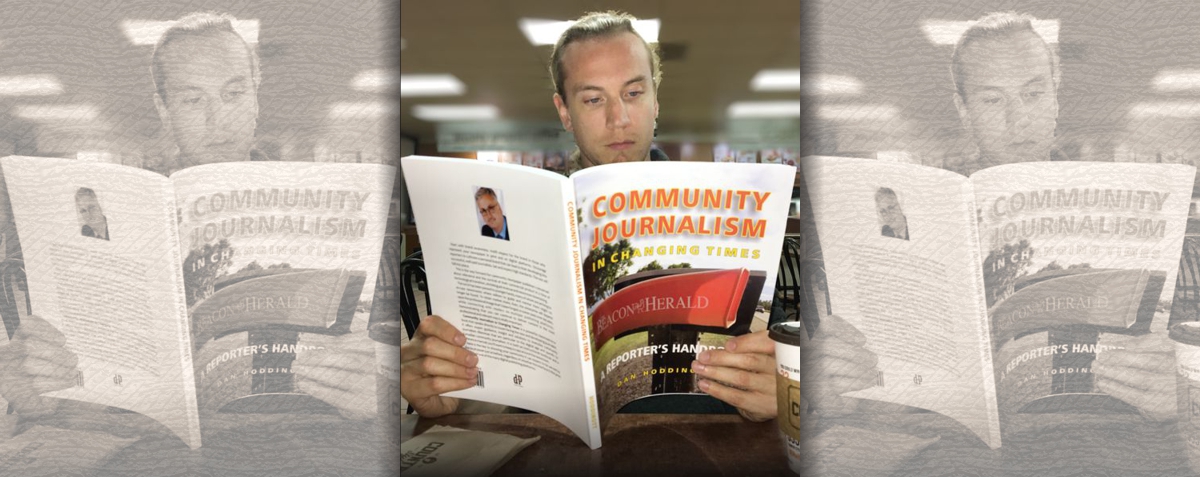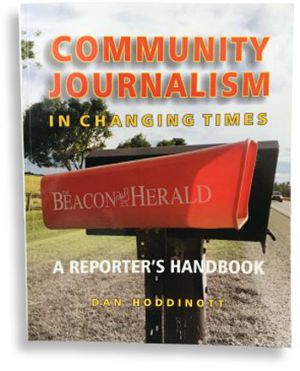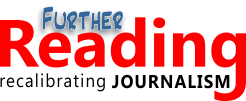A mentor in the newsroom
The role of standards in maintaining relevance in the digital age

By DAN HODDINOTT
Fragmented audiences and multiple publishing platforms requiring daily attention... Downsized newsrooms and increasingly centralized news coverage... Elevated scrutiny from critical readers and waning co-operation from traditional sources in public institutions... Powerful digital advertising possibilities go unexploited as a needy market, having been soundly taught to disregard electronic advertising, misses the boat... Decades-old, deeply entrenched publications teetering on the brink of extinction... Other than that, the esteemed profession of community journalism looks to stand in good stead for the foreseeable future.
NOT EVERYONE BELIEVES THE DOOM AND GLOOM applies to all. And surely, not all publications will succumb to the immense pressures facing us today; some will rise above the fray, perhaps stronger than before, as a consequence of applying the logic of the two-sided coin: a challenge that presents a problem on one side of the coin can be all but guaranteed to present an opportunity on its obverse. Newspapers that are alert and willing to adapt can arrive at a survival strategy if they learn to accommodate the challenges listed above, rather than settling for being assailed by them.
You'll find a lot of discussion about advertising, branding, community presence, distribution models and other business strategies — in the service of helping the community newspaper survive, all — in this website's Reading Room. But the fundamental reality is, you have nothing to work with unless the product you produce is strong. Without a reliable, readable stream of trustworthy news flowing from your newsroom into the various output streams at your disposal you have nothing to sell, and no justification for holding onto your position in the marketplace.
The newsroom is the newspaper's most important asset. (The advertising department remains essential, but it is in the process of reinventing itself and, importantly, would have no raison d'être at all without a credible news product.) The one department you cannot afford to have compromised is the very department under the most strain from industry upheaval. Increasingly young newsrooms are being staffed by still-learning reporters feeling their way around multiple publishing platforms, crowded media spaces, destabilized social and legal expectations and the sheer weight of established newspaper tradition, often without a senior reporter or editor to turn to for guidance.
Young reporters have been an asset in the transition from traditional to digital publishing, to be sure, what with their seemingly effortless embrace of whatever new tools happen to be emergent at the moment. Publishers have also been able to count on them to accurately report who's doing what and congregating where on the plethora of digital platforms vying for consideration. And their instincts in regards to navigating cultural shifts have been admirable as well. Oh yes, there most definitely is a place for leadership to emerge among the ranks of the young.
It is vital that we recognize, however, that this "leadership" matures incrementally and is a quality that requires nurture, not hands-up exclamation (no matter how badly we might wish to see it early on). You cannot expect a cub reporter to have the overview of your publication's position in its marketplace that a veteran journalist would own, for example, nor the wisdom in editorial decision-making befitting a seasoned editor. And there is a considerable distance between understanding technology in principle and understanding appropriate application of that technology in the context of an established news organization's well-being. For that matter, it is not reasonable to expect the aforementioned critical positions, having vanished from the newsroom in cost-cutting moves, to be returned to you simply by the act of transferring the vacant titles to persons who have not yet qualified for the roles.
Standards must be maintained
The displaced editors and senior reporters who could mentor the young reporters, while maintaining a level of standards necessary to hold the newspaper's position in the community and in the marketplace, are not returning. But the standards have to be maintained all the same, if the newspaper is to continue being regarded as credible. As the sober, professional voice in the midst of an avalanche of affected, sometimes-highly-charged chatter crowding virtually every digital platform your audience turns to for information. As the de facto news source for all things meaningfully local the community has relied upon, perhaps for generations. This is a tall order for reporters just learning their craft in real-world situations, and being expected to walk in the footsteps of professionals they will never see.

JAM-PACKED POWER PAGES: Every page in Community Journalism In Changing Times is loaded with richly potent content designed to offer solutions to real-world dilemmas facing today's community journalist.
It cannot be overstated: a strong product, one that is relevant to its readership and enjoys a prominent position in its community, is our stock in trade — and our only path to survival. We won't survive catcalls of "fake news" littering social media spaces, nor acquiring a reputation for producing opinion-laced news narration, incomplete articles and poorly informed stories, and certainly not losing our sense of here in reporting on local matters. Lack of attention to any of these can leave relevance perpetually beyond our grasp, for in a world where choice is omnipresent and allegiances are fluid readers will move on to whomever is willing to tell them, truthfully and accurately, what they want to know about the things that matter in their lives. Should we permit the product to degrade, no matter the reasons for it, there is no point in expending resources on mastering the other challenges: dead is dead.
This is not a rant against the decisions that have left many newsrooms without a mentoring presence; it is simply an acknowledgement that this is so, and that a solution is available. I am proud to unveil two powerful educational products — the textbook Community Journalism In Changing Times: A Reporter's Handbook and an on-site workshop series. Both are drawn from my 40-plus years in Canadian community journalism as a reporter, editor, managing editor and publisher. They offer expert guidance, insight and solutions to everyday community journalism dilemmas that are particular to the digital age and specific to Canadian community journalism. I am confident that, together or as separate packages, they will make a significant difference in your newsroom — particular useful as a guide for the young reporter and a handy reference for the mid-career journalist.
Many eager young cubs arrive in their first newsroom fully trained in the fundamentals of journalism, and well schooled in its technical nuance too, but boots-on-the-ground guidance in getting to know the publication and its audience on an intimate basis has, until recently, been a non-negotiable element in grooming the newcomer. In the absence of an on-site mentor to provide such guidance, young reporters can turn to the pages of Community Journalism In Changing Times: A Reporter's Handbook to find critical instruction on applying proper journalistic standards here.


